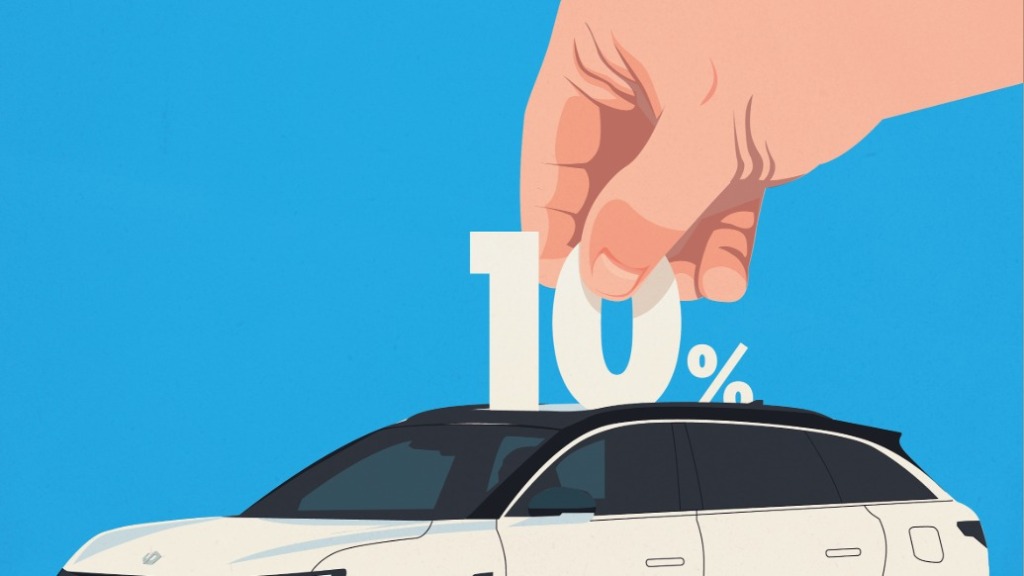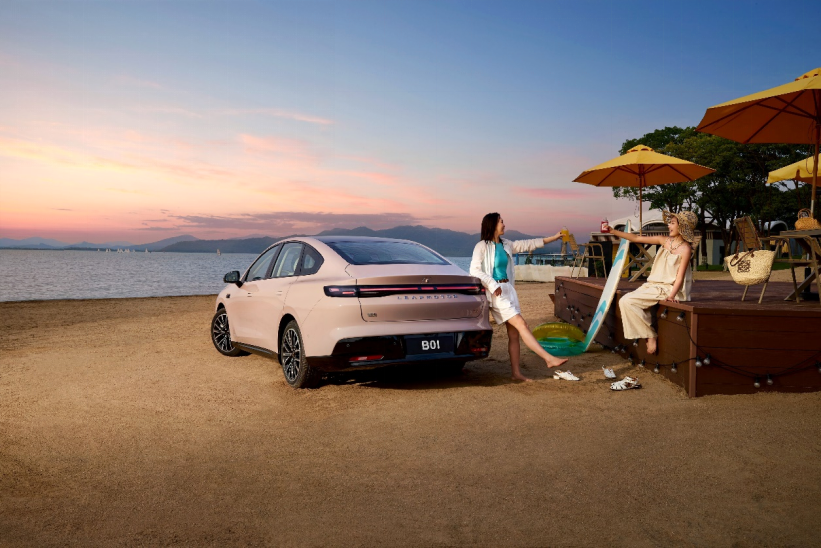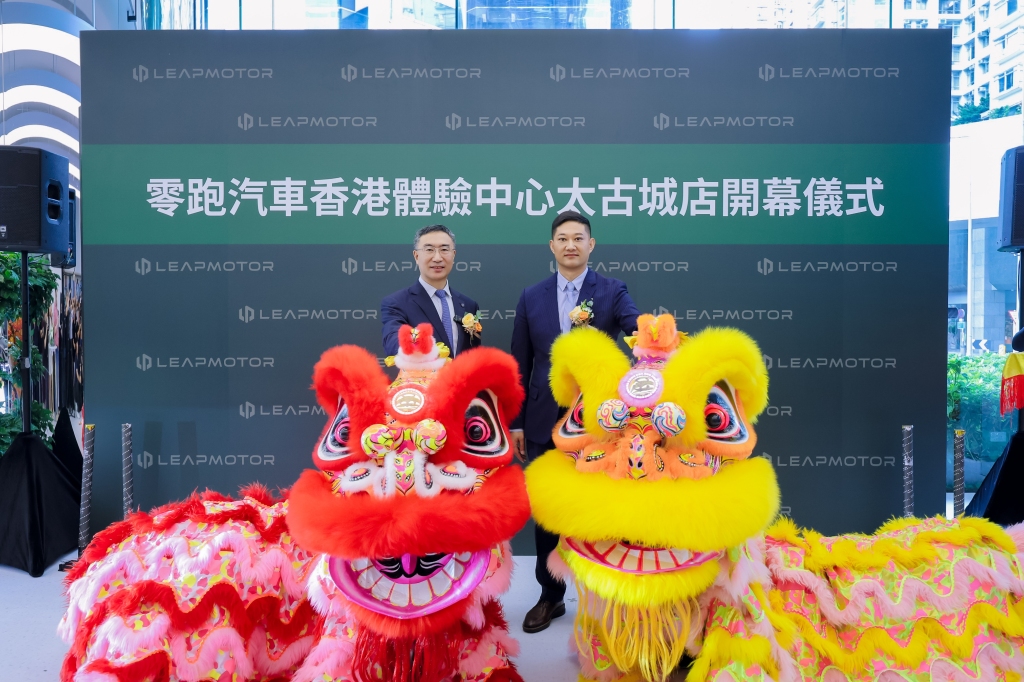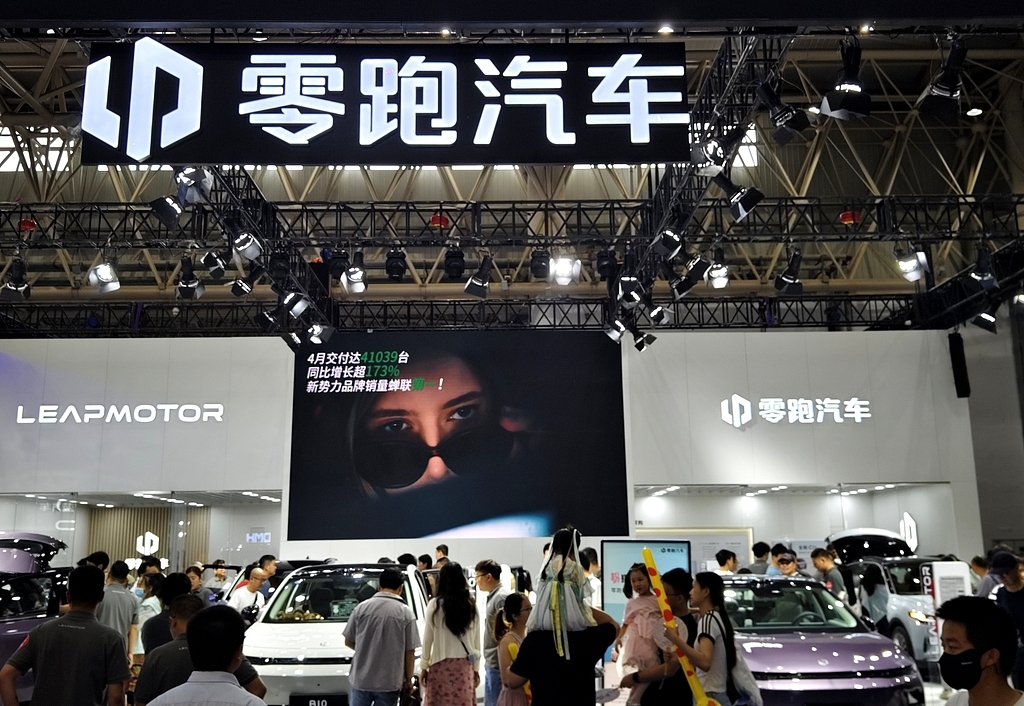
On August 20, according to media reports, China FAW is planning to acquire a stake in Leapmotor, initially intending to acquire approximately 10% of its shares and become its strategic shareholder. The plan has been circulated and promoted within relevant internal departments.
China FAW's responses to this have included "not knowing yet" and "the news is untrue", but the industry is not surprised by this.

FAW plans to acquire approximately 10% of Leapmotor's shares. (Visual China Photo)
In early March this year, the two parties signed a "Memorandum of Understanding on Strategic Cooperation", which clearly stated that they would carry out joint development in the fields of R&D and components, and explore the feasibility of capital cooperation.
The cooperation framework includes two dimensions: first, R&D cooperation, with both parties jointly developing new energy passenger vehicles and parts; second, exploring the feasibility of capital cooperation to achieve resource synergy across the entire industry chain.
Shortly after the memorandum was signed, the technical cooperation was quickly implemented. At the end of March, information on China FAW's electronic bidding and procurement trading platform indicated that Leapmotor Technology had won the bid for the joint vehicle development and platform licensing fee technology procurement project for the Hongqi G117.
Leapmotor announced in its latest financial report that its first co-developed vehicle project with FAW has been finalized, with follow-up work actively underway. According to sources familiar with the matter, Leapmotor's first model, a joint venture with Hongqi, is already under development and is scheduled to be launched in the second half of 2026 through FAW's overseas channels.
From a strategic perspective, this collaboration is a mutually beneficial two-way effort. In March 2024, Zhang Yuzhuo, director of the State-owned Assets Supervision and Administration Commission (SASAC), publicly called out three state-owned enterprises (SOEs)—FAW, Dongfeng Motor, and Changan Automobile—to assess their new energy vehicle businesses.
FAW, the "eldest son of the Republic," is expected to deliver over 3.2 million vehicles in 2024, but faces immense pressure in its new energy transition. By 2024, FAW's new energy vehicle sales will reach 339,000, accounting for 10.6% of the group's total sales. This is lower than Changan Group's 27% and Dongfeng Group's 34%, and falls short of the national market penetration rate of 40.9%.
In contrast, emerging brands like Leapmotor have performed exceptionally well. In the first half of 2025, Leapmotor delivered 221,700 vehicles, ranking first among Chinese emerging brands in terms of sales, a year-on-year increase of 155.7%. July deliveries exceeded 50,000 vehicles for the first time, making it the only Chinese emerging brand to achieve this feat in a single month since 2025.
FAW needs Leapmotor's innovative vitality and technological capabilities to accelerate its transformation, while Leapmotor needs FAW's scale effect and resource support to achieve a leap forward.
Leapmotor's core advantage lies in its "full-scale in-house research and development" strategy. Currently, over 65% of Leapmotor's components are in-house developed and manufactured, covering core components such as the three-electric system, intelligent driving, and vehicle-mounted computer platforms. This vertical integration brings significant cost advantages.
In the first half of 2025, Leapmotor's gross profit margin reached 14.1%, a record high, a significant increase of 13 percentage points from 1.1% in the same period of 2024, verifying the role of full-area self-research and development in improving profitability.
FAW is attracted by Leapmotor's technological penetration. By collaborating with Leapmotor, FAW will be able to gain intelligent electric vehicle platform capabilities, fill gaps in its new energy technology and product matrix, and shorten its transformation cycle.
Leapmotor's financial data for the first half of 2025 also demonstrated strong growth momentum. The report showed that Leapmotor's revenue in the first half of the year reached 24.25 billion yuan, a year-on-year increase of 174.0%. Its net profit was 30 million yuan, marking its first half-year positive net profit and becoming the second Chinese emerging automaker to achieve a profitable half-year.
On the other hand, Leapmotor already has a precedent for capital cooperation with traditional auto giants. In 2023, Stellantis Group made a strategic investment in Leapmotor, acquiring a 20% stake in the company for €1.5 billion. They then jointly established Leapmotor International to start exporting to other countries.
In the first half of 2025, Leapmotor exported 20,375 vehicles, ranking first among emerging car brands. Leapmotor International has established over 600 service outlets in approximately 30 countries and markets, including Europe and the Middle East.
After FAW's investment, Leapmotor is expected to leverage FAW's financial support and channel network to further enhance its bargaining power in parts procurement, reduce costs, and enhance product price competitiveness.
This cooperation model is expected to bring new development opportunities to both parties.
Industry insiders analyzed that China FAW's investment in Leapmotor will bring it three kinds of support: first, it will complete the new energy technology and product matrix; second, it will accelerate its overseas expansion by leveraging the cooperation between Leapmotor and Stellantis; and third, it will share growth benefits through strategic investment and achieve closer cooperation in the industrial chain.
The financial report shows that Leapmotor's non-auto sales business brought in nearly 1.1 billion yuan in revenue in the first half of the year, of which "FAW R&D revenue" accounted for about 200 million yuan.
Leapmotor has raised its full-year sales guidance from 500,000-600,000 vehicles to 580,000-650,000 vehicles, and plans to challenge the sales target of 1 million vehicles in 2026.
The industry is waiting to see whether this cooperation model between traditional state-owned automakers and new forces can provide a new path for the transformation of China's auto industry.


